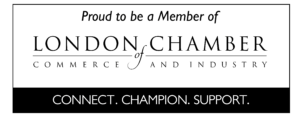Branding or Marketing: Which is right for you?
The question of whether investing in branding or marketing is the best option for your business has raged for many years. For me people are usually asking the wrong question, The better questions to ask are about the necessary outcomes desired and time frame. Essentially, can you play the long game or do you need some quick wins? If we are brutally honest with ourselves, for most of us the answer is probably a little of both. And in the present financial landscape, many are probably leaning more towards aiming for quicker, short-term wins. Knowing what you need to achieve in both the short and long-term timeframes will help decide what actions should be your primary focus.
These days branding and marketing are inexorably intertwined. Many business owners I speak to are not really able to state a clear distinction between the roles. My view is that they do share a great deal of common ground – but they approach the questions from very different perspectives.
I often explain branding in terms of reputation management. If you have a poor reputation then it is going to affect sales regardless of how good a job the marketing material does. If there is a disconnection or lack of trust in the brand itself, if the brand messaging is broken or the brand has been damaged by bad reviews or bad press – then the best marketing in the world will still struggle to win back the trust and belief of your audience.
Effective branding is about creating a relationship of trust so loyalty and repeat business becomes the norm. The most effective brands develop those customers to become advocates – so good branding translates to the conversation the public has about you. As Jeff Bezos, Founder and CEO of Amazon said it: “Your brand is what other people say about you when you’re not in the room.” And these days the biggest rooms are social media sites with their global reach. A bad review will travel the globe in seconds.
Marketing, on the other hand, in whatever form it takes, is the conversation your company has with present and potential clients. The modern consumer is very savvy and is inherently aware, and usually somewhat suspicious, about being marketed to.
Playing the short or the long game.
Marketing tends to be measured over much shorter periods of time than branding. We talk in terms of marketing campaigns – which can alter messaging and focus regularly. We tend to measure marketing in actions or sales, and the ROI is expected in relatively short timeframes. (ie. weeks and months).
Did campaign X deliver the expected results? With the desired increased website visitors completing purchases, an upturn in sales in region Y during/following our marketing or advertising activities? These are the type of metrics that every business is familiar with.
Alternatively, branding is about building a relationship of trust and confidence. Which by nature requires a longer timeframe. It’s a much longer process, more akin to dating. You take time to get to know one another. Building familiarity, trust and depth of relationship along the way. You wouldn’t ask someone to marry you on your first date, would you?
If you are looking to build a strong brand – or evaluate your brand position then ask yourself:
- Is the brand standing for (and expressing) a consistent message across all its communication channels?
- Does the brand ‘walk the talk’ – ie. does the company deliver on its brand positioning and promises?
- Are your customers’ experiences matched to the messaging? Always a key factor in building trust and loyalty with the audience.
This brand-based, customer journey requires the establishment of a relationship and so needs a reasonably long timeframe. It’s more a series of long country walks, with time to talk and get to know one another, rather than a 200m sprint. I know that’s an overly simplistic metaphor, as both branding and marketing cross-pollinate and interweave massively, but I can only deal in broad brush strokes here.
The question I often ask is: Can a marketing campaign deliver if your audience does not know and trust the brand? In some cases and for some products the answer is Yes! Otherwise, no new names would ever enter the marketplace. But customers tend to only trust an unknown entity as a ‘calculated gamble’, or impulse buy, which they will then critically evaluate. Impulse buys by nature tend to have a lower price point relative to the individual’s income.
To command greater customer loyalty, gain repeat business and a larger premium then the brand that stands behind the marketing offer becomes a key consideration.
Which begs the question: Can a brand exist without marketing? The two are so co-dependent that I truly can’t think of an example. Any action of presenting the brand to market could be classed as advertising or marketing in some way. Each relies on the other, each is co-dependant but if plotted on a Venn diagram they would have a very large shared area. There are specialist marketing firms and there are specialist branding agencies, so for me, the distinction is really more about strategy and delivery.
In simple terms, the brand lead approach should, if done properly, be about aligning the overall strategy and messaging. Whereas marketing is generally focused on the delivery of the specific message to the relevant target audience. A marketing department might be running several different campaigns aimed at different sectors or different customer avatars, the UPS might also be a distinctly different offer to each target audience. But I’d argue that these should all be held under the overall brand strategy or the public can start to feel confused and even distrustful of a company that appears to change depending on who it’s speaking to!
Moreover, I’ve never yet seen marketing value appear on a company ledger – whereas brand values are regularly cited in company valuations. For Coca-Cola, brand value accounts for approx $70 billion of its £120 billion valuation. * But it’s a mistake to think that branding is just for international companies.
In a world where social media channels are the primary interaction tools then having an online presence is crucial. Which explains the explosive rise in personal branding as people strive to build a personal following to capitalise on their own unique qualities and expertise. Any presentation of yourself, product or company is a marketing opportunity although overt selling tends to be counterproductive on such platforms, and so brand positioning becomes the key focus. Marketing and branding do co-exist and cross-pollinate hugely but I would suggest, for reasons already stated, companies should start with the brand.
Developing a strong brand position, with distinctive brand collateral and messaging that is proven to connect and resonate with the target audience – building a solid relationship of trust, should build customer loyalty and give rise to more impactive and effective marketing.
It’s not all visual
Branding is not all visual … which is a common mistake many businesses appear to fall into. It’s about representing the essence of who you are, how you work and what you do. In as authentic and honest a way as possible – across all the customer touchpoints. Every interaction with your business needs to be fully aligned and honestly reflect your core values.
The modern consumer is very attuned to identifying when things don’t quite ‘smell right’ – so being honest and authentic is the only option. Any sense of you being disingenuous will damage your customers’ relationship – usually irreparably… and with social media and review sites at everyone’s fingertips that is likely to transpire into much more than simply one damaged relationship.
Most people still think about branding in a primarily visual way. With designers driving the look and feel of the brands’ presentation to the world that is understandable. The UK Design Council has researched the impact of design and states:
- Design increases turnover; For every £1 invested in design, businesses can expect over £20 in increased revenues
- Design is linked to profit; For every £1 invested in design, businesses can expect over £4 increase in net operating profit
- Design boosts exports: For every £1 invested in design, businesses can expect a return of over £5 in increased exports
-
But modern branding should also include the tone of voice and language you use. Many people are starting to develop brand collateral that involves the other senses too. Sound branding has become much more common – and with the growth of voice search technology (like Alexa and Siri) the need to consider the auditory representation of a brand is a huge growth area.
Other firms have even invested in specific scents. Some retailers have custom aromas they use in their stores: Abercrombie & Fitch, Starbucks, Pandora and even Samsung have all embraced scent branding within their stores. Apple also has a scent that is used – when you unbox a new Apple product it’s a full sensory experience. The new box smell is no mistake. The fact that a new iPhone box is such a tight fit that there is a sense of a vacuum or suction has been purposefully designed to create that experience. The almost church-like, scale and feel of the original Apple stores were unlike anything on the high street at the time … all these customer interactions have been considered and designed to deliver an overall experience of the brand.
So, Do you need quick wins? or Do you need long-term loyal customers?
The truth is that all businesses need both. As branding and marketing become more aligned knowing your objectives and having clear measurables is crucial.
I believe that ‘the brand’ should be the touchstone that all business activities are checked against. If something doesn’t align with the brand – in vision, implementation or ethos then it could damage your relationship with your audience.
I believe that ‘the brand’ should inform all marketing actions. If the direction you are taking doesn’t seem to fit with the overarching brand then it could be time to look at a rebrand to re-align all the elements into a new, unified vision. Alternatively, it could be time to launch a new entity or create a subbrand. There is no one size fits all approach. It all depends on your objectives and your audience.
My advice?: Do the research and follow the data. If you’re not sure how to progress it could be valuable to do a brand and communications audit first? And if you are really stuck and unsure what to do then you can always give a brand professional a call.
- Figures quoted are from 2006







Im excited to discover this site. I need to to thank you for your time for this fantastic read!! I definitely liked every little bit of it and I have you book-marked to check out new things on your website.